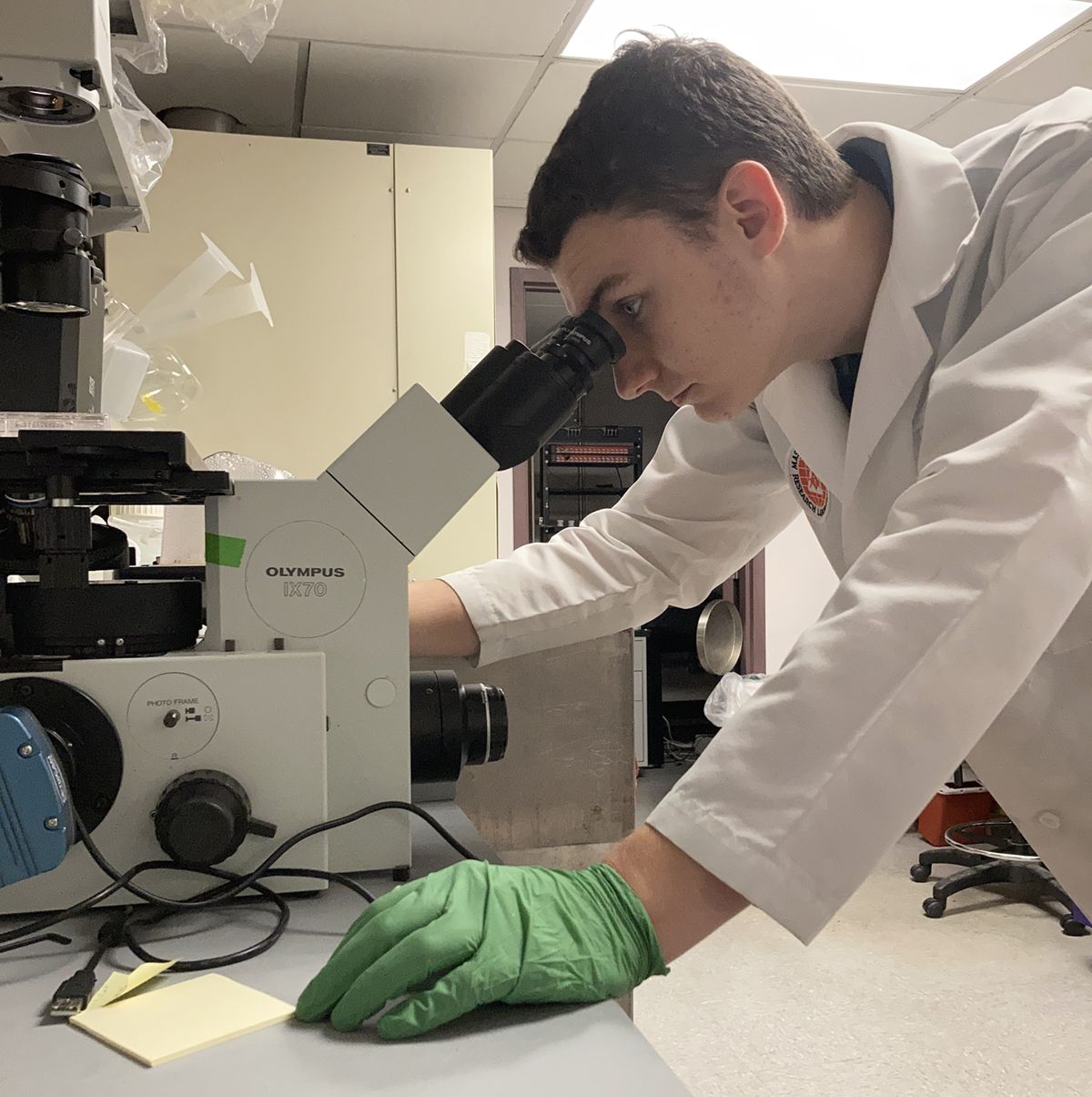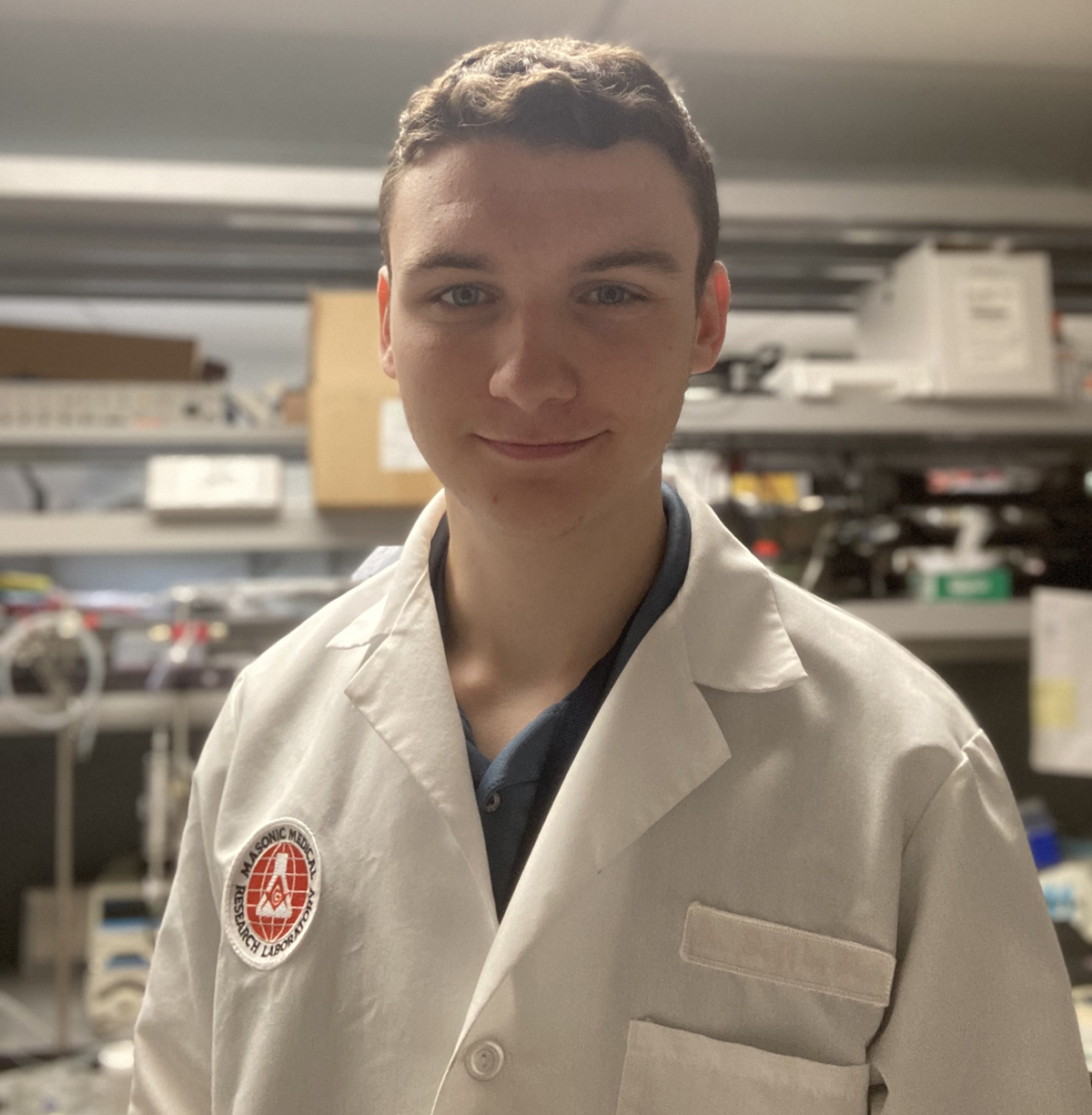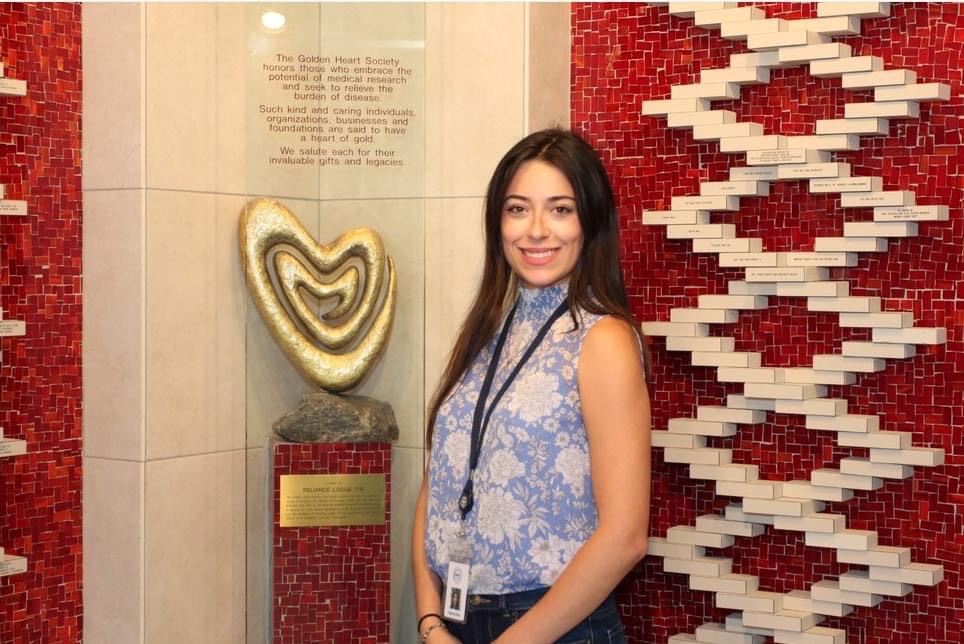Lab summer: Two students participate in MMRI fellowship
During the 10-week program, students are immersed in cutting-edge STEM research

Integrative neuroscience major Gianna Sisti and biomedical engineering major/biology minor Ryan Soron are spending their summer in the lab — and they wouldn’t have it any other way.
The two are taking part in the Masonic Medical Research Institute’s Summer Fellowship Program in Utica.
During the 10-week fellowship, undergraduate, graduate and medical students are immersed in cutting-edge science, technology, engineering and math (STEM) research. They are paired with a principal scientist and the institute, and work together to design a project that complements both the interests of the student and the laboratory.
This year, the competitive program received 49 applications from colleges and universities across New York state, the highest number in its 64-year history, said MMRI Predoctoral Research and Postdoctoral Affairs Program Coordinator Khanh Ha. Ten are selected.
Stem cells: Getting the size right
For his fellowship, Soron — a rising senior from the Utica area — was paired MMRI Research Assistant Professor Gary Aistrup to study induced pluripotent stem cells.
IPSCs are skin or blood cells that have been reprogrammed back into an embryonic-like pluripotent state that enables the development of an unlimited source of any type of human cell needed for therapeutic purposes. Aistrup’s research focuses on cardiac cells.
“Heart-muscle cells from an adult are just like your brain cells — they don’t divide much once you’re fully grown,” Soron said. “That’s why when you have a heart attack, a seizure or a stroke, it’s so damaging to the body, because your brain and heart can’t really regrow those cells.”
Growing up, he gravitated toward biology and math as his favorite subjects in school, and he loved to use mathematical principles and equations to solve problems. When he heard about the BME program at Binghamton’s Thomas J. Watson College of Engineering and Applied Science, he knew what field he wanted to pursue.
“I found that biomedical engineering was the perfect marriage of my two favorite subjects,” he said. “I could have been a Harpur student with biology only, but I wanted to do more of the math and the problem-solving that comes with engineering and creativity. Biomedical engineering is a jack-of-all-trades kind of thing. We learn a little bit of mechanical engineering, we learn a little bit of electrical and chemical engineering, and put it all together to interact with the human body. I think that’s my favorite part of it all.”
At MMRI, Soron is working on an issue when growing IPSCs into heart cells: They often are smaller and not the brick-like shape of mature cardiomyocytes.
“My main research is trying to make them more mature, so they’re closer to an actual adult heart cell,” he said. “I’m working with nanopattern surfaces, that are like grooves patterned onto the plate where we grow the cells, and they force the cells to grow in a certain shape and size.”
When he returns to campus this fall, Soron will serve as vice president of Binghamton’s Alpha Eta Mu Beta National Biomedical Engineering Honor Society, and he’s also a member of the Biomedical Engineering Society.
“After getting my bachelor’s, I plan to stay at Binghamton for Watson’s 4+1 program. I can get my master’s degree in one extra year — that’s a great, great program,” he said. “Beyond that, I was hoping to get an industry job with a pharmaceutical company or biotech company, but I’m also getting a taste of research here and wouldn’t be opposed to doing that. We’ll see how I like it in graduate school.”
Brown fat: A fix for obesity?
Sisti, a rising senior at Binghamton, also has long been familiar with MMRI; she grew up in the Utica area, and the institute is a 15-minute drive from her house. She learned about the fellowship during a high school tour, and she made up her mind to apply after her first year of college.
“That spring after my freshman year, I started getting my application together — and then COVID hit. Everything shut down,” she remembered.
She didn’t give up on her fellowship dream, however, and applied as soon as the program reopened.
At MMRI, Sisti is researching the influence of thyroid hormones on brown fat tissue as a potential target for treating obesity. The project uses mouse models, exploring gene expression and the impact of treatment on specific genes.
It’s a different field of research than the ones Sisti is used to in neuroscience, but she finds the work meaningful and fascinating.
“When you think fat, you think about stored energy. But brown fat actually has the ability to burn up fatty acids and increase energy expenditure; it can burn fat and calories in a person,” she said. “That’s why it could be a potential target for treating obesity, if we can figure out the way to manipulate it.”
Long-term, Sisti plans to earn a master’s degree and become a genetic counselor. A background in research is a definite plus for anyone interested in a science field, including genetics and healthcare, she reflected.
During the course of the fellowship, Sisti has expanded her knowledge about the metabolism, genetics and the technical processes behind research. Fellowship participants hone their science communication skills by presenting papers, including their research results.
“This is my first time working hands-on at a lab bench. The comfort I feel being in the lab now compared to how I felt when I first got here is so different,” she said. “Now I’m more comfortable doing tasks independently.”



